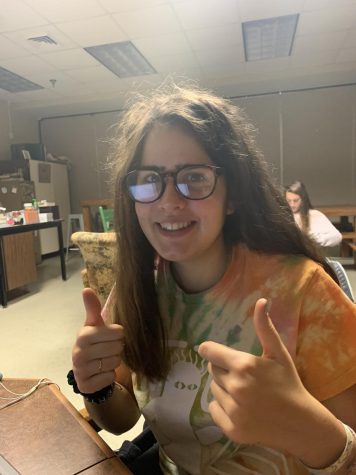Australia on Fire
Australia is burning. With no end in sight, many wonder how they will recover.
![Steve Shattuck from Canberra, Australia [CC BY-SA (https://creativecommons.org/licenses/by-sa/2.0)]](https://LafayetteLedger.org/wp-content/uploads/2020/01/Shattuck_67444_smoke_from_bush_fires_49354601631-475x356.jpg)

Australia is being plagued by the bush fires that first hit the continent in late July. The country is in complete sorrow and devastation as their once beautiful country, is now in ashes. Twenty-eight people have died in the fires, including firefighters and civilians, trying to help or escape the burning areas. 1.5 million acres of land have been engulfed by the fires, destroying the homes of millions and the ecosystems that inhabit the land. With aid from different countries, including the United States and Canada, global firefighters are in a panic trying to settle down the fires. Many ask, how did it get this bad and who is to blame? Will the fires stop? Will Australia ever recover?
Kelly Schisa, a senior at Lafayette High School, commented on the crisis in Australia, “It is devastating to watch such an un-problematic country be destroyed in front of our eyes. There is little we can do besides donate.” Australia’s call for help has been heard around the world, and their desperate situation in the minds of many.

The fires have hit every state in Australia, from Western Australia to the Queensland. Unfortunately, New South Wales has had the worst of it. The fires have affected major cities like Melbournes and Sydney. According to The Guardian, Melbourne’s air quality is the worst air quality in the world. The air quality in Sydney has been considered to be at a “hazardous” level. Canberra, the capital of Australia, is surrounded by pure smoke from the fires. Jacynda Ellison, an early college student at Thomas Nelson Community College, said, “As a future nurse, I can’t imagine the strain on their lungs over there. I learned last year, that being around that much smoke can cause permit damage and can cause multiple diseases, including cancer. I hope that everyone is doing okay.” Bushland, forests and parks have been ripped apart from the fires. Neighborhoods in the suburbs are currently unlivable due to these devastating fires. The life and geography of Australia has now changed forever.
The fires are varied, some being massive, and others comprising smaller, individual areas. Some have ended quickly, while others still rage on even after months. New South Wales is currently the worst state, with over fifty fires still burning.

However, Australia is no stranger to theses fires. They have a fire season each summer, but the fires that are currently happening went beyond their expectations. Australia has very hot, dry summers and with a whole in the ozone layer right above its country, which is no surprise to anyone well-versed on the situation with the environment and atmosphere. Sydney Yeats, a senior at Lafayette High School, commented, “I have known for years that Australia was in peril. It has been getting hotter and hotter every summer. What is so sad, is that many are saying this will continue for months. I wish that if we treated our world better, maybe this would have never happened.”
With the fires still burning, the blame for these devastating fires continue to spread throughout the country. While it is nearly impossible to pin point the blame, some are saying natural causes are the cause of these fires. Dry lighting has caused a series of fires in Victoria. Humans are also to blame with over population cause the whole in the ozone layer, but as well as people starting bush fires themselves. The NSW has charged over 20 people for purposely starting the fire and 183 people with fire-related offenses, according to the police in Australia. Australia is currently in its worst drought in over a decade with heat waves ranging from 113 to 120 degrees Fahrenheit.
![Japan Meteorological Agency website [Attribution]](https://LafayetteLedger.org/wp-content/uploads/2020/01/2019–20_Australian_bushfire_as_seen_by_Himawari_8_2020-01-04-475x370.jpg)
![Buiobuione [CC BY-SA (https://creativecommons.org/licenses/by-sa/4.0)]](https://LafayetteLedger.org/wp-content/uploads/2020/01/Buiobuione_-_kangaroo_at_kangaroos_island_4-475x321.jpg)



